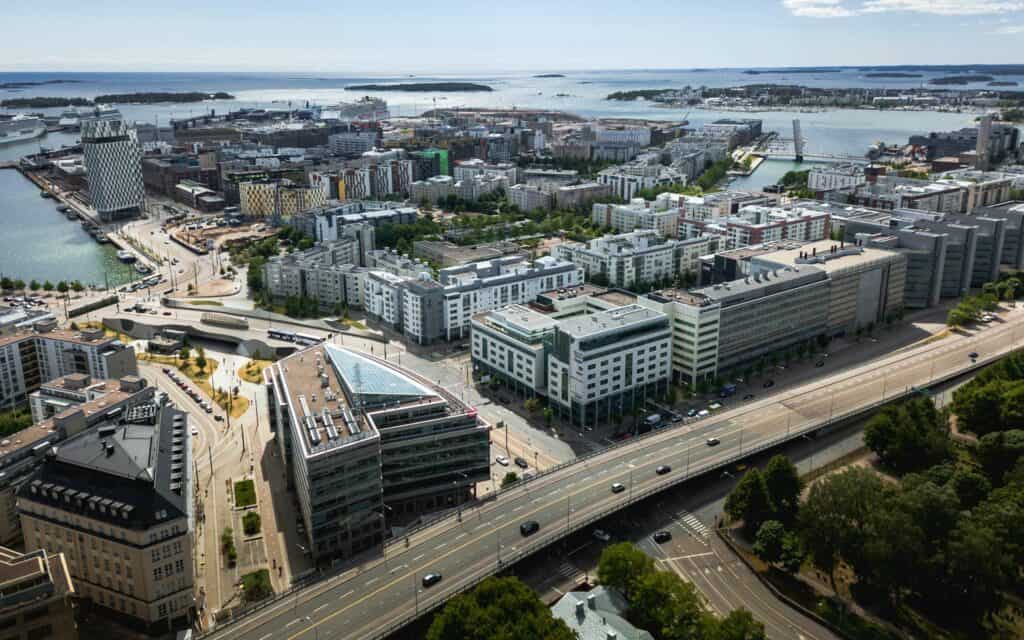Modern man lives under the illusion of being the most intelligent being
out there. This is the paradox of human nature; we all want to make the best
decisions with the knowledge we have at any given time, but on the other hand,
our thinking is largely based on how our ancestors organized the world in their
time.
Possibly the most tangible example of this in our everyday lives is
infrastructure. While there seems to be plenty of candidates offering new
solutions to the already existing urban environment, there are not that many
looking to challenge the current urban order. Cities are full of talk—but who
walks the walk?
Re-imagining Urban Environments
Olli Hakanen, a long-term specialist in re-imagining
workspaces and urban environments, has an extensive background in both
architecture and consultancy. His latest venture, Respace, aims to address how
urban environments are being developed to better suit the needs of their
residents as well as the environment. According to the ideology behind Respace,
instead of always building something new, often all that is needed is a re-thinking.
“Most
architecture focuses on building some new addition to add to an already
existing system; say, an apartment building added into a given city. But
perhaps the focus should be on non-building planning; often, you can find more
feasible solutions by re-thinking the space and its use. Instead of planning a
building because someone says they need more space, maybe we should look into
how the existing space has been used so far and re-think how it could be used
in the future. This has been my professional guideline for a long time, and
this is also at the very heart of Helsinki Stream City,” Hakanen confirms.
Love for Potential, Passion for Results
The central idea
of Helsinki Stream City is that the system needs a fix, but there are no quick
ways to make one. People need to commute better and faster; the environment
needs to be consumed less, and money should be used wiser than it was before.
As is typical for innovations, Helsinki Stream City was born outside the
current system.
Helsinki Stream
City has two fundamental entities: “People Flow Master Plan” and
“Freight Flow Master Plan.” The first focuses on the commuting of
people and the second on the moving of goods. These two plans form the core of
Helsinki Stream City, which essentially models a completely new urban
environment and architecture. The plan is definitely big and bold—while the
status quo might be even more so.
As Olli Hakanen
points out: “You cannot fix a heart problem with a plaster. I aim to
question the given facts; my work history shows this attitude has led to
innovative thinking and solutions. That is also why I took on the challenge of
re-thinking urban environments in the first place. The values of Respace are
‘love for potential, passion for results’—and this acts as a guideline for everything
that we do. There are a lot of politics surrounding urban environments, but I
am convinced that should not stop us from re-thinking and doing our best.”
Documentary Film as a
Communication Tool
The challenge was
to help all the stakeholders—including the political forces and the private
sector—understand the reasoning behind this radical plan. This is where
KIRA-digi, the Finnish national digitalization program, came in. While most
KIRA-digi projects are focused on developing a single solution, Helsinki Stream
City Pilot was all about using the AI of today and tomorrow to develop the
system itself.
“With the
support of KIRA-digi, we were able to prepare a short documentary on Helsinki
Stream City, which premiered on May 18, 2019, in Helsinki Central Library Oodi.
While we had to make some compromises due to changes in financing, the
documentary is a fantastic communication tool, and I am happy we had the chance
to complete it,” Hakanen says.
A documentary
film was chosen as a medium mostly because it allows effective communication in
a relatively short time. Another—obviously more costly—option would have been
to create a game environment—a format into which urban design is already
heading due to the fantastic possibilities it offers to simulate different
options in a given environment.
Taking Urban Planning to the Next
Level
For now, Hakanen
is continuing to develop the concepts of the “People Flow Master
Plan” and “Freight Flow Master Plan” in cooperation with Aalto
University and the City University of New York. Besides Helsinki, the City of
New York has given a lot of inspiration to Olli Hakanen, which he got to see
up-close during his time as architect-in-residence of the Finnish Cultural
Institution in New York back in 2015 and for a second time during January–March
2019.
“We, as humankind, are at a crossroads when it comes to commuting. Private cars are too expensive for us and the environment, while public transportation is facing growing pressure in terms of handling the increasing numbers of passengers as well as meeting the needed service time and frequency. Now Helsinki has the possibility to be at the forefront of taking the first big, bold step forward into a new future,” Hakanen concludes.
Olli Hakanen will be presenting at WDBE 2019 in Helsinki in September. Before that, connect with him on LinkedIn.


